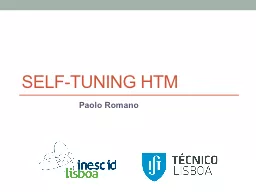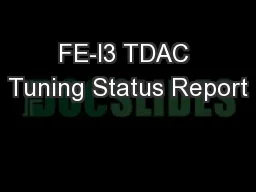PPT-Index Tuning
Author : tawny-fly | Published Date : 2016-03-03
Dennis Shasha and Philippe Bonnet 2013 Outline Index Utilization Heap Files Definition ClusteredNon clustered DenseSparse Access method Types of queries Constraints
Presentation Embed Code
Download Presentation
Download Presentation The PPT/PDF document "Index Tuning" is the property of its rightful owner. Permission is granted to download and print the materials on this website for personal, non-commercial use only, and to display it on your personal computer provided you do not modify the materials and that you retain all copyright notices contained in the materials. By downloading content from our website, you accept the terms of this agreement.
Index Tuning: Transcript
Download Rules Of Document
"Index Tuning"The content belongs to its owner. You may download and print it for personal use, without modification, and keep all copyright notices. By downloading, you agree to these terms.
Related Documents














